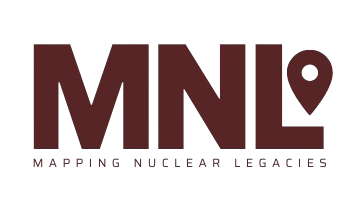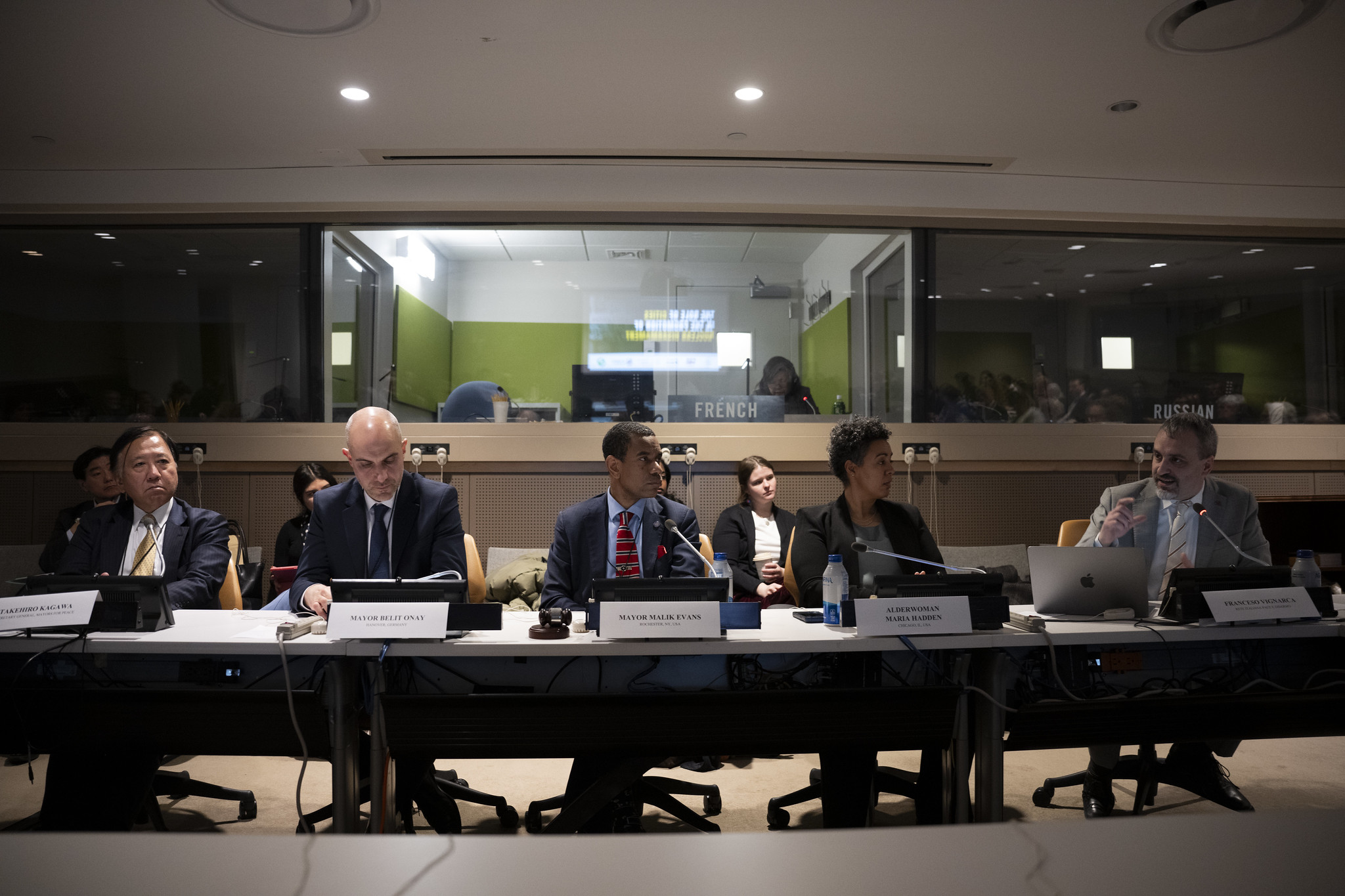City leaders play a unique and actionable role advancing nuclear disarmament and promoting peace. It’s an effort that is all the more urgent as tensions between nuclear-armed states escalate. Recognizing the increasing importance of achieving a nuclear free world, the Mapping Nuclear Legacies team recently collaborated with key advocacy groups and NGOs working towards nuclear abolition—including Mayors for Peace, Physicians for Social Responsibility, and the International Campaign to Abolish Nuclear Weapons (ICAN), with sponsorship from Austria—to host a side event at the United Nations during the Third Meeting of States Parties (3MSP) to the Treaty on the Prohibition of Nuclear Weapons (TPNW).
On March 4th, the second day of the conference, the event opened with remarks from Denise Duffield of Physicians for Social Responsibility Los Angeles and Austrian Foreign Minister George-Wilhelm Gallhofer, who framed the 3MSP and side event within the growing threat of nuclear weapons in today’s volatile geopolitical climate, emphasizing the grave risks facing the world. “The magnitude of these consequences means that we need to eliminate even the smallest risk of their occurrence,” Gallhofer said.
Takehiro Kagawa, chair of the Hiroshima Peace Culture Foundation, spoke next, underscoring the urgency of citizen engagement in realizing nuclear abolition, and stressed the importance of worldwide networks for peace, such as Mayors for Peace and ICAN. “The voices of citizens and city-level peace activities are needed more than ever for realizing a world free from nuclear weapons,” he said.
Hiro Miyazaki followed their remarks with his own context of the importance of city diplomacy in nuclear deterrence, highlighting the Mapping Nuclear Legacies project. He explained that cities and communities across the United States have legacies of nuclear weapons use and development that have had generational impacts on people’s health and safety, and that the project set out to document municipal-level actions taking place to address those legacies. Recalling the efforts of an Oregon advocate campaigning for resolutions in support of the TPNW, he said, “It was about building relationships, elevating unheard voices, and ensuring that Indigenous communities, communities of color, and downwinders—those most impacted by nuclear weapons development—were at the center of the conversation.”
Featured next were video messages from Mayor Kazumi Matsui of Hiroshima and Mayor Shirō Suzuki of Nagasaki. Both leaders spoke of their cities’ unique histories as atomic bomb targets and how that legacy has shaped their commitment to diplomacy and international peace efforts. They emphasized the role of diplomatic and cultural engagement with cities and countries around the world, which can help foster global stability and build a culture of peace.
A roundtable discussion followed, featuring city leaders who shared insights into how cities engage in these meaningful partnerships to promote peace and nuclear disarmament. The panel included; Mayor Belit Onay of Hanover, Germany; Mayor Malik Evans of Rochester, New York; Alderwoman Maria Hadden of Chicago; Mayor Nicole LaChapelle of Easthampton, Massachusetts; and Francesco Vignarca of the Italian peace and disarmament network Rete Pace e Disarmo.
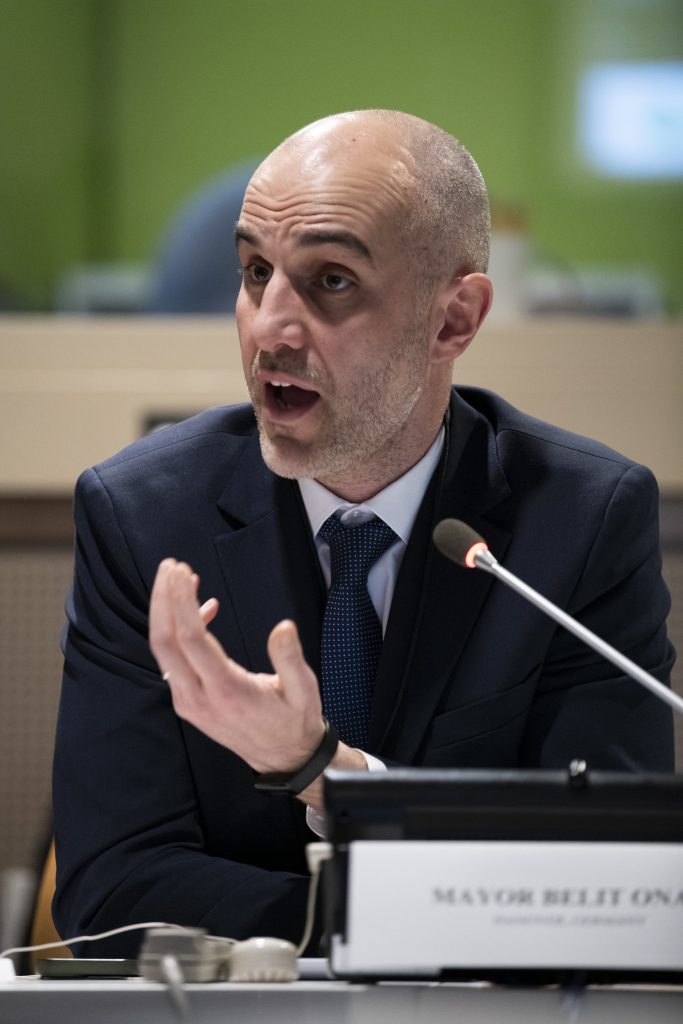
Photo credit: ICAN | Darren Ornitz
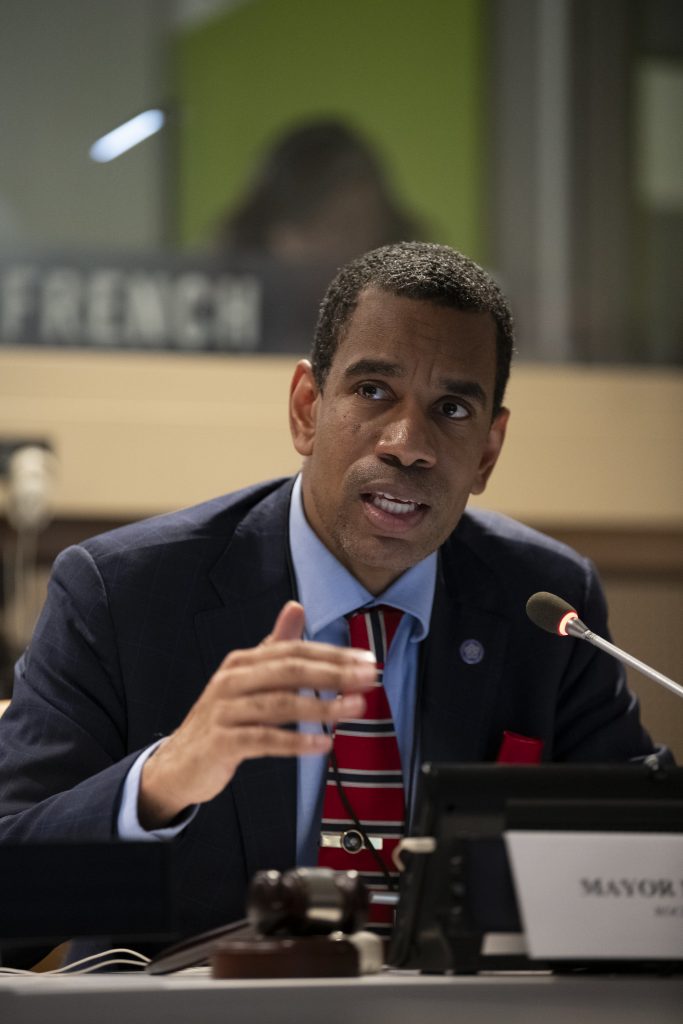
Photo credit: ICAN | Darren Ornitz
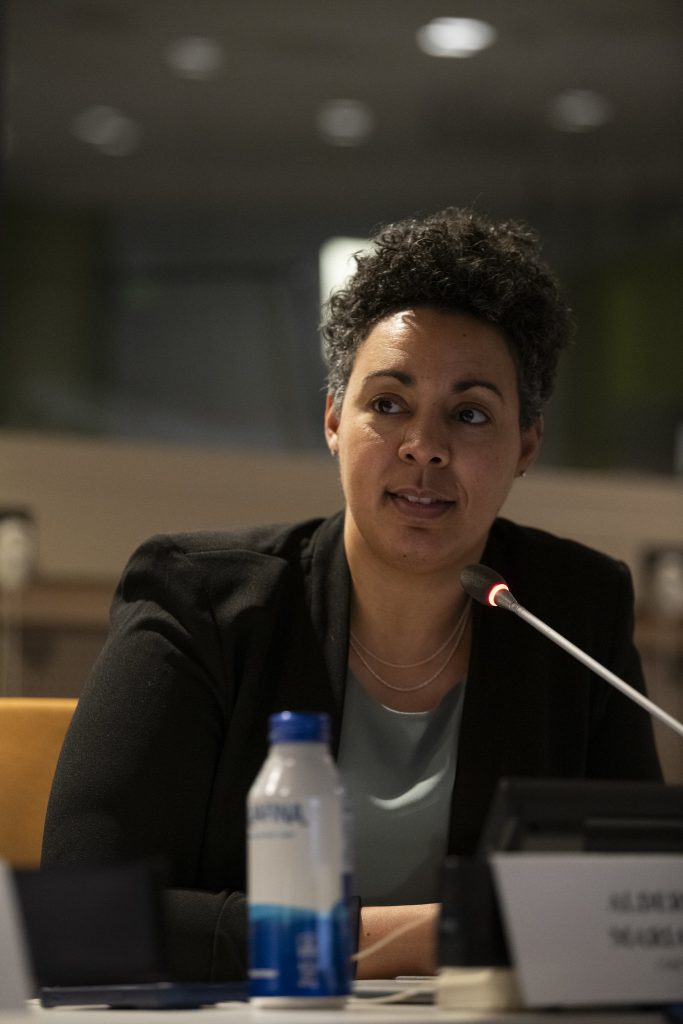
Photo credit: ICAN | Darren Ornitz
Throughout the discussion, the city leaders all emphasized that cities are uniquely positioned in the nuclear disarmament conversation, as they are the primary targets of nuclear weapons. But beyond this general threat, many city leaders are also motivated by their communities’ specific legacies with war and nuclear weapons.
Mayor Onay noted that while Hanover was not directly affected by nuclear weapons like Hiroshima or Nagasaki, its World War II history makes deterring the threat of war an issue of particular significance, particularly as Russia’s war in Ukraine has heightened nuclear concerns in Europe. He added that a representative of Germany’s federal government was absent from this year’s 3MSP conference, meaning this advocacy at the municipal level carries additional weight.

Photo credit: ICAN | Darren Ornitz
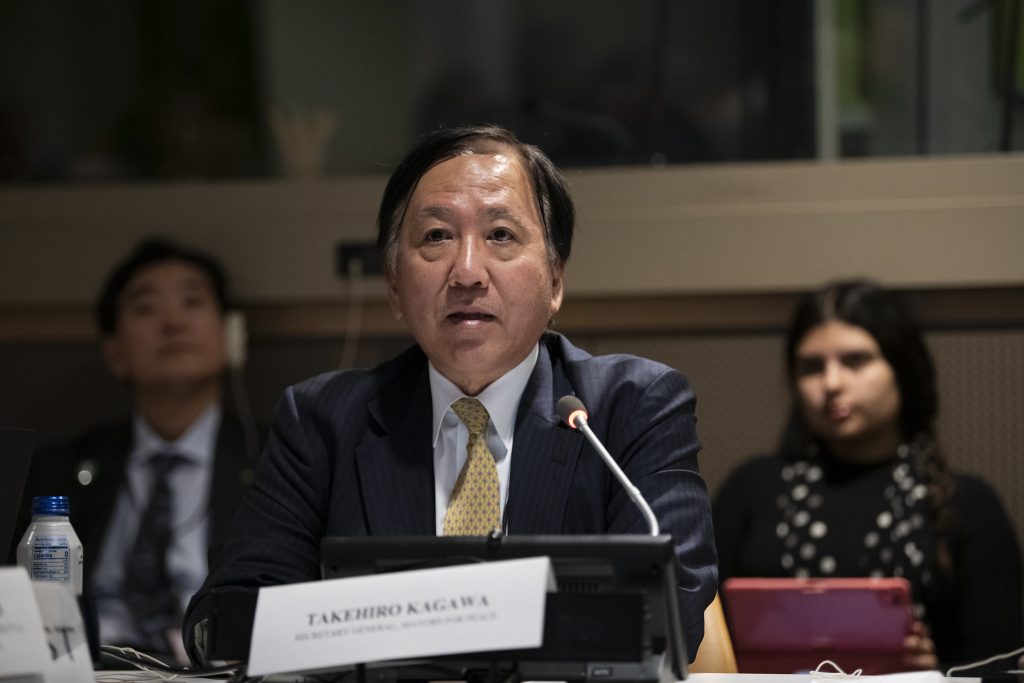
Photo credit: ICAN | Darren Ornitz
For Alderwoman Hadden, Chicago’s role as the birthplace of the Manhattan Project underscores the city’s responsibility in the nuclear conversation. She highlighted the city’s annual $500 million taxpayer contribution toward nuclear weapons development and storage, emphasizing the frustration of working within a national framework that does not always reflect constituent interests. “It’s important for cities to raise their voices and use what power they have,” she said.
Mayor Evans underscored the importance of engaging young people in advocacy and peacebuilding, ensuring they play an active role in shaping a more peaceful future. “Young people are going to move from mere participants to decisionmakers at some point. If there are decisionmakers in our cities across the world, they may think twice about nuclear weapons. They may think twice about war.”
The power of local governments in shaping national policy was another key theme of the discussions. Mayor Adams emphasized that municipalities and states often serve as test cases for new policies because they have such a direct connection to the constituents. Mayors and city leaders also have the ability to be more politically agile in addressing urgent issues.
“Young people are going to move from mere participants to decisionmakers at some point. If there are decisionmakers in our cities across the world, they may think twice about nuclear weapons. They may think twice about war.”
-Mayor Evans
Italy’s city-level activism provides a compelling example of this influence. In Italy, nearly 100 cities have passed anti-nuclear resolutions as part of ICAN’s Cities Appeal campaign. Vignarca said that in Italy, local governments believe they have a role in influencing national and foreign policy. He stressed that mayors, in particular, are directly responsible for the public health of their constituents and have a duty to protect them, and therefore to engage in discussing threats to that safety.
Mayor LaChapelle of Easthampton added that mayors are expected to have protocols in place for nearly every emergency scenario, and there is no protocol for nuclear weapons—a stark omission that underscores the need for municipal engagement on the issue.
Grassroots activism is essential for sustaining this momentum for city-level action, Vignarco emphasized. To advance nuclear disarmament efforts, he said it is critical that citizens approach their local leaders with proposals for action.
The discussion concluded with a Q&A, and included a notable comment from Archbishop John Wester of Santa Fe, New Mexico, who expressed interest in encouraging mayors from his state to join the Mayors for Peace network given the nuclear legacies of communities like Los Alamos, where the first atomic bomb was developed and tested.
These local leaders remind us that significant work is being done at the municipal level to reflect the will of the people in deterring the use of weapons that only pose an existential threat to life, health and safety. Through city diplomacy, these efforts continue to challenge the status quo and advocate for a more peaceful world.
